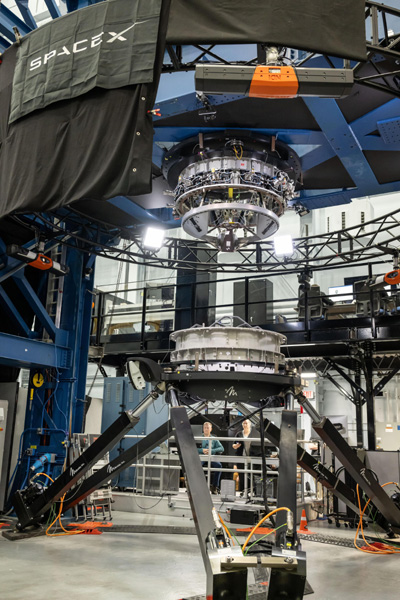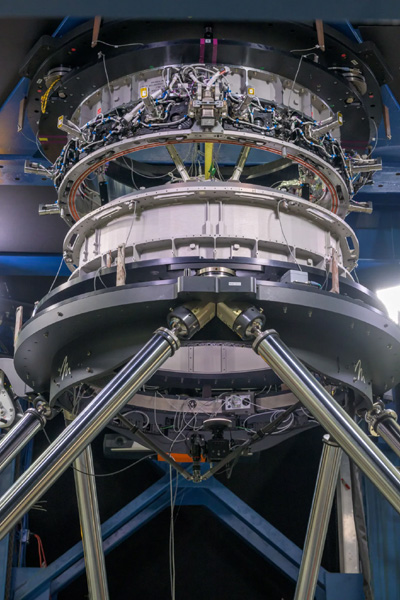
SpaceX
NASA, SpaceX Test Starship Lunar Lander Docking System (News Release)
As part of NASA’s Artemis campaign that will establish the foundation for long-term scientific exploration at the Moon, astronauts will need to move between different spacecraft to carry out lunar landings. NASA and SpaceX recently performed qualification testing for the docking system that will help make that possible.
For the Artemis III mission, astronauts will ride the Orion spacecraft from Earth to lunar orbit, and then once the two spacecraft are docked, move to the lander, the Starship Human Landing System (HLS) that will bring them to the surface. After surface activities are complete, Starship will return the astronauts to Orion waiting in lunar orbit.
During later missions, astronauts will transfer from Orion to Starship via the Gateway lunar space station. Based on SpaceX’s flight-proven Dragon 2 docking system used on missions to the International Space Station, the Starship docking system can be configured to connect the lander to Orion or Gateway.
The docking system tests for Starship HLS were conducted at NASA’s Johnson Space Center over 10 days using a system that simulates contact dynamics between two spacecraft in orbit. The testing included more than 200 docking scenarios, with various approach angles and speeds.
These real-world results using full-scale hardware will validate computer models of the Moon lander’s docking system.
This dynamic testing demonstrated that the Starship system could perform a “soft capture” while in the active docking role. When two spacecraft dock, one vehicle assumes an active “chaser” role while the other is in a passive “target” role.
To perform a soft capture, the soft capture system (SCS) of the active docking system is extended while the passive system on the other spacecraft remains retracted. Latches and other mechanisms on the active docking system SCS attach to the passive system, allowing the two spacecraft to dock.
Since being selected as the lander to return humans to the surface of the Moon for the first time since Apollo, SpaceX has completed more than 30 HLS-specific milestones by defining and testing hardware needed for power generation, communications, guidance and navigation, propulsion, life support and space environments protection.
Under NASA’s Artemis campaign, the agency will land the first woman, first person of color, and first international partner astronaut on the lunar surface, and prepare for human expeditions to Mars for the benefit of all. Commercial human landing systems are critical to deep space exploration, along with the Space Launch System rocket, Orion spacecraft, advanced spacesuits and rovers, exploration ground systems and the Gateway space station.
Source: NASA.Gov
****

SpaceX

No comments:
Post a Comment